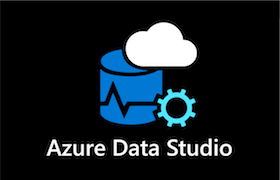 Azure Data Studio is a new cross-platform desktop user interface for data professionals allowing you to manage and maintain your SQL Server environments in an On-Premises or Cloud environment, either running on Windows, MacOS or Linux.
Azure Data Studio is a new cross-platform desktop user interface for data professionals allowing you to manage and maintain your SQL Server environments in an On-Premises or Cloud environment, either running on Windows, MacOS or Linux.
In this series of posts I will take you on a journey of the history of Azure Data Studio and walk you through the features and functionality available with this toolset and explain when and why you would use this UI and compare against SQL Server Management Studio when appropriate.
Azure Data Studio was first released on November 15, 2017 but it was originally called SQLOPs Studio. Keeping in line with SSMS, SQLOPs studio has a monthly release cycle allowing for new features to be included into the product, but also allowing for quick turnarounds on fixing any bugs or issues that we as end users find with the interface. Given the interface is in preview, this has allowed for the product team to get lots of usable insight from us the community.
Fast forward through to September 2018 and not only do we have a name change from SQLOPs Studio to Azure Data Studio, It is now Generally Availability for all to use. Even though it has been made GA, the monthly release cycle has stayed. To see the full release cycle on what has been included and fixed since November 2017 you can read the Release Notes.
So what do we get with Azure Data Studio? Well do not think because of its name, that it is only for working in Azure. At the time of writing this post, we are able to connect to nearly all environments related to SQL Server. That includes:
- On-Premises Instance of SQL Server
- Cloud IaaS instances of SQL Server
- Azure SQL Database
- AWS RDS SQL Database (I have not tested this yet)
- Azure Data Warehouse
You will notice I have not made any mention of any of the following:
- SQL Server Integration Services
- SQL Server Reporting Services
- SQL Server Analysis Services
At the time of writing this post, I could speculate on whether they will end up with some functionality in the interface, but it would just be that. So maybe over the course of this series of posts we are able to talk more on these but for now I do not have much to write about with connecting to these services.
Downloading and installing this product is extremely easy and you have multiple avenues to download and install based on whether you are using Windows, Linux or MacOS as your preferred platform of choice. You can download and install the appropriate Azure Data Studio from the Install page.
In the next post we will look at Installing Azure Data Studio







[…] Azure Data Studio – An Introduction […]